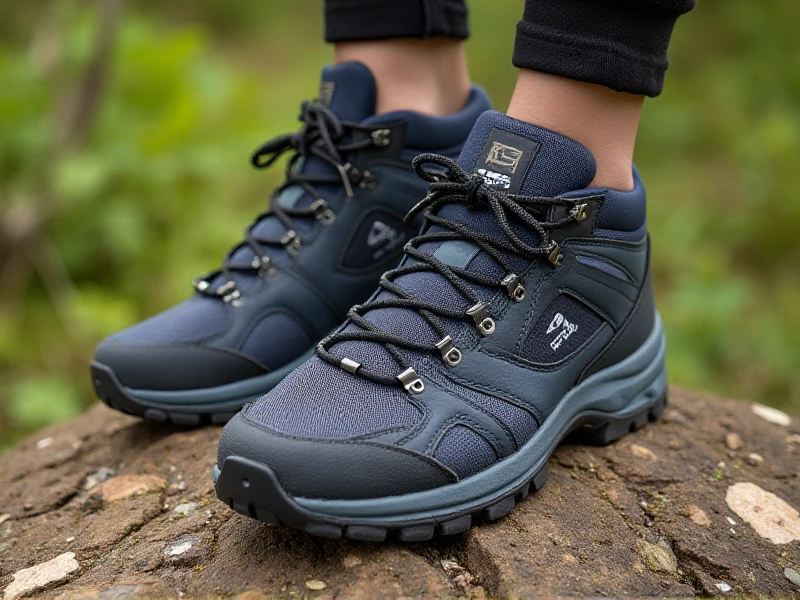Men's Hashing Shoes: Your Ultimate Trail Companion for Comfort and Performance
2025-06-09

Choosing the right pair of hiking shoes isn't just about footwear; it's about equipping your feet for adventure, safety, and conquering diverse terrain comfortably. For men seeking reliable performance on the trail, investing in quality men's hiking shoes is paramount. This guide explores key features, benefits, and tips for selecting your perfect pair.
Why Proper Men's Hashing Shoes Matter
Hiking demands footwear engineered for specific challenges. Ordinary sneakers lack the crucial support, grip, and protection needed on uneven paths, slippery rocks, or steep inclines. The right men's hiking shoes:
1. Enhance Safety: Prevent slips and falls with aggressive traction, especially vital in wet conditions or navigating loose scree.
2. Boost Comfort: Minimize fatigue and blisters through ergonomic cushioning, arch support, and heel stability during long miles.
3. Provide Essential Protection: Shield your feet from sharp rocks, roots, and debris via durable uppers and protective toe caps.
4. Offer Stability: Support ankles and feet on uneven ground, reducing strain and injury risk.
5. Manage Moisture: Keep feet drier and more comfortable with breathable membranes (like Gore-Tex®) or quick-drying materials.
Key Features to Look for in Men's Hashing Shoes
When shopping for men's hiking shoes, prioritize these critical elements:
Outsole: Seek Vibram® or similar high-quality rubber compounds featuring deep, multi-directional lugs. This "lug pattern" is vital for maximum grip on various surfaces (mud, rock, dirt). Aggressive tread provides superior traction crucial for safety.
Midsole: This is the cushioning and support engine. EVA foam is common, offering good shock absorption. Consider firmer EVA or polyurethane for better stability and durability on rugged trails, especially with a backpack. Look for adequate arch support integrated directly.
Upper: Material and construction define durability, breathability, and protection:
Leather: Offers excellent durability and abrasion resistance (full-grain highest, split-grain lighter). Often requires more breaking in.
Synthetics (Nylon, Polyester): Generally lighter, more breathable, quicker to dry, and often need less break-in time. Look for tough, abrasion-resistant panels.
Waterproofing: Membranes like Gore-Tex® prevent water ingress while maintaining breathability, essential for damp trails or unpredictable weather.
Fit: Arguably the most critical factor. Men's hiking shoes must fit snugly without pinching, especially around the heel and midfoot. Always try them on with the socks you intend to hike in. Ensure ample toe room (about a thumbnail's space at the end) to prevent bruising on descents. Walk extensively in-store, including on an incline ramp if available.
Weight: Lighter shoes reduce leg fatigue, ideal for day hikes or fastpacking. Heavier boots typically offer more support, protection, and stability for challenging terrain or backpacking with heavier loads.
Ankle Support: Hiking shoes generally sit below the ankle. Hiking boots rise above for more ankle stability. Choose based on the terrain difficulty and pack weight. Shoes offer more freedom of movement.
Choosing Between Hiking Shoes and Boots
For men's hiking shoes, understand their role:
Hiking Shoes (Low-Cut): Ideal for day hikes, well-maintained trails, and moderate terrain. They prioritize agility, breathability, and lighter weight. Perfect for warm, dry conditions.
Hiking Boots (Mid to High-Cut): Provide superior ankle support, stability, and protection for rugged trails, heavy loads, uneven surfaces, cold weather, or longer backpacking trips.
Top Considerations Beyond Specs
Terrain & Usage: Match the shoe to your most common trails. Are they rocky mountain paths, muddy forest tracks, or dry desert trails? Do you carry a light daypack or a heavy multi-day backpack?
Breathability vs. Waterproofing: Waterproof men's hiking shoes are crucial for rain, snow, or wet crossings. However, in hot, dry climates, extremely breathable non-waterproof shoes prevent sweaty, uncomfortable feet – prioritize mesh uppers.
Break-In Period: Never wear brand-new men's hiking shoes on a major hike. Walk shorter distances locally first to mold them to your feet and prevent blisters. Quality shoes become increasingly comfortable over time.
Tread Longevity: Inspect the lugs periodically. Worn-down tread significantly reduces grip and safety. Replace shoes when traction starts to fail.
Caring for Your Men's Hashing Shoes
Extend the life of your men's hiking shoes:
1. Clean: Remove dirt and mud post-hike with a soft brush/water. Avoid harsh chemicals.
2. Dry: Air dry naturally at room temperature, away from direct heat sources (which damage materials). Remove insoles to aid drying inside. Stuff with newspaper only if extremely wet, replacing paper regularly.
3. Condition (Leather): Use appropriate leather conditioners periodically to maintain suppleness and water resistance.
4. Waterproofing: Reapply DWR (Durable Water Repellent) treatments on synthetic or non-Gore-Tex® leather shoes as instructed by the manufacturer to maintain effectiveness.
Explore leading brands dedicated to outdoor footwear like Salomon, Merrell, Keen, Vasque, Columbia, Hoka One One, Altra, and more to discover men's hiking shoes perfectly aligned with your specific trail needs. Finding the right fit unlocks greater miles, confidence, and pure trail enjoyment. Invest wisely – your feet will thank you summit after summit.
Category: